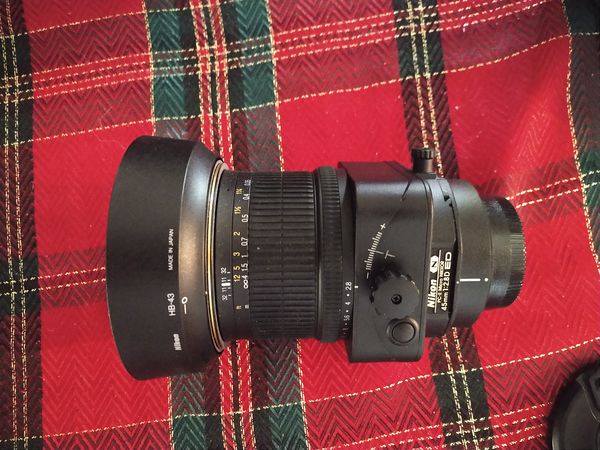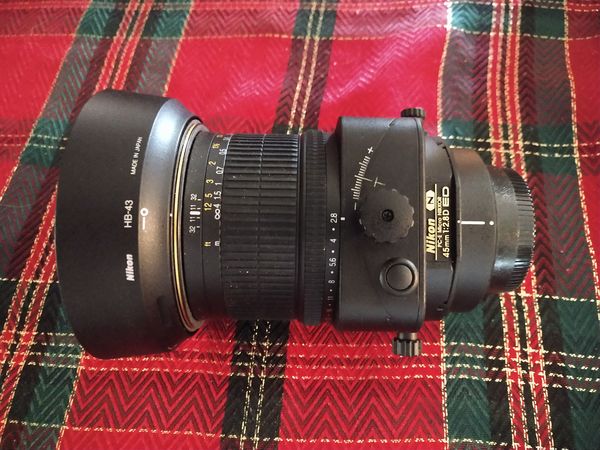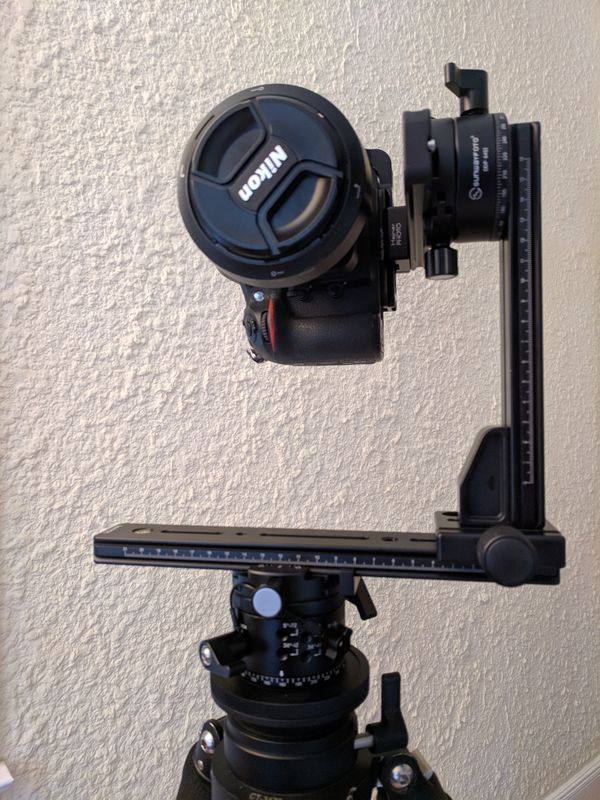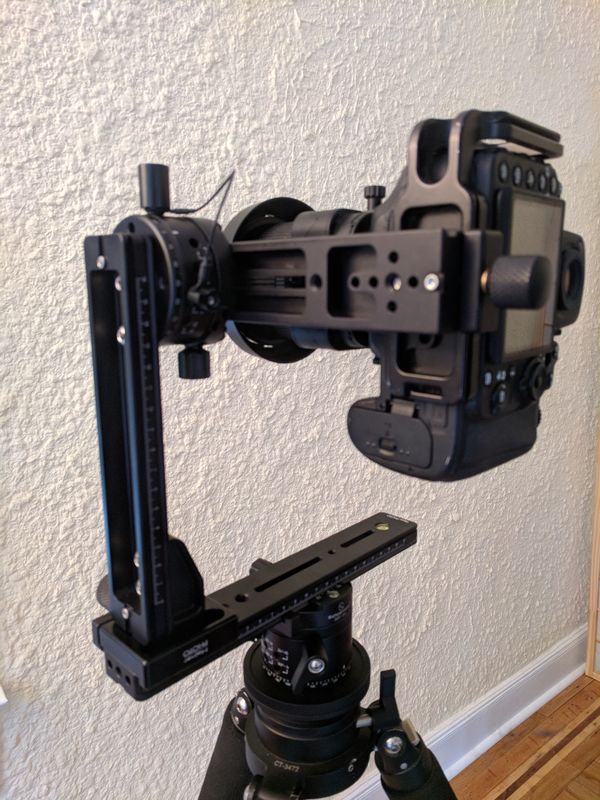Tilt Shift Lenses.
Dec 27, 2020 23:20:17 #
pdsilen
Loc: Roswell, New Mexico
When I have been shooting real estate interiors, I've been depending on PS to provide me with strait 90 degree lines. Now, I'm thinking about investing in one or two tilt shift lenses. I've looked on KEH and other photo dealer's web sites. I see all different specs. Most of the rooms I shoot are 10' x 10', 10' x 12', and an occasional 12' x 16' As I look at the different lenses, I see a variety of specifications and I don't know one from the other. I'm open to feed back.
Dec 27, 2020 23:30:06 #
Depends on brand camera you shoot as each offers different ones . IMHO TS lenses are much better then PS where you end up losing image sides . Get the widest you can as if too wide you can crop if not wide enough you can't back up thru walls . I owned the Nikon 28mm PC with film and always wished it was wider . Don't neglect the tilting ability of these lenses . Can come in handy on hallway and sidelong views , etc .
Dec 27, 2020 23:54:49 #
If I were you I'd be looking at the Laowa15mm shift lens. It has only slightly less shift than the Nikon 19mm but is significantly wider and about 1/3 the price. It does not tilt but you don’t need tilt for architecture generally speaking. Check it out.
Dec 28, 2020 00:01:36 #
I have a Canon 5D Mark IV. It is a solid worthy camera probably as good as a Nikon D4 or D5. As much as I drool over the New Canon 1D or the Nikon D6, I cant justify the price tag.
So, I have a Rokinon 24mm Tilt Shift Lens. Any wider or narrower will truly lose a complete aspect of the frame and will distort the image. I can use the 24mm without a “fish eye” feel. Since the f/stop is 3.5 you can use it in both day or night.
Because of the mechanism, this lens will be more expensive than a lens of comparable focal length. I picked mine up for about $480 give or take. It is a massive lens and has packs a hefty weight to it, not because of the elements but because of that mechanism.
The mechanism is somewhat sophisticated because you need to learn how to tilt the lens so as to shift the path of light. I suggest you invest in a good, solid tripod. It will weigh like a beast but the steadiness is what you really need. I’m not going to suggest a tripod because that piece of equipment you probably worked out from previous gigs.
You should rent a tilt-shift Lens first. This is so you familiarize yourself with the mechanism. Sadly, they are manual focus and don’t have image stabilization. The aperture is from the lens and you must select it. Because of this, you may not wish to buy it and carry around a hunk of metal and glass that your using once in a while.
I use my tilt shift often for photographing the skyscrapers and churches in NYC. I don’t like the look that a regular wide angle gives. For What It’s Worth, the T-S lens keeps all perpendiculars parallel to each other. The building doesn’t look like it’s falling backwards. The same will be true in real estate photography. A wide angle gives a fish eye look. With a tilt shift you can get a good perception of the room with out it all walls seeming to converge in the distance.
Tilt shift lenses can also be used to photograph miniature models, but that’s another story.
Thanks for your question and I want you to know I’m more of an occasional hobbyist rather than the professionals we have on UHH.
Please Be Well and Stay Safe
Sincerely, Scruples
rph_steven@yahoo.com
So, I have a Rokinon 24mm Tilt Shift Lens. Any wider or narrower will truly lose a complete aspect of the frame and will distort the image. I can use the 24mm without a “fish eye” feel. Since the f/stop is 3.5 you can use it in both day or night.
Because of the mechanism, this lens will be more expensive than a lens of comparable focal length. I picked mine up for about $480 give or take. It is a massive lens and has packs a hefty weight to it, not because of the elements but because of that mechanism.
The mechanism is somewhat sophisticated because you need to learn how to tilt the lens so as to shift the path of light. I suggest you invest in a good, solid tripod. It will weigh like a beast but the steadiness is what you really need. I’m not going to suggest a tripod because that piece of equipment you probably worked out from previous gigs.
You should rent a tilt-shift Lens first. This is so you familiarize yourself with the mechanism. Sadly, they are manual focus and don’t have image stabilization. The aperture is from the lens and you must select it. Because of this, you may not wish to buy it and carry around a hunk of metal and glass that your using once in a while.
I use my tilt shift often for photographing the skyscrapers and churches in NYC. I don’t like the look that a regular wide angle gives. For What It’s Worth, the T-S lens keeps all perpendiculars parallel to each other. The building doesn’t look like it’s falling backwards. The same will be true in real estate photography. A wide angle gives a fish eye look. With a tilt shift you can get a good perception of the room with out it all walls seeming to converge in the distance.
Tilt shift lenses can also be used to photograph miniature models, but that’s another story.
Thanks for your question and I want you to know I’m more of an occasional hobbyist rather than the professionals we have on UHH.
Please Be Well and Stay Safe
Sincerely, Scruples
rph_steven@yahoo.com
Dec 28, 2020 00:10:34 #
Dec 28, 2020 00:10:39 #
pdsilen wrote:
When I have been shooting real estate interiors, I've been depending on PS to provide me with strait 90 degree lines. Now, I'm thinking about investing in one or two tilt shift lenses. I've looked on KEH and other photo dealer's web sites. I see all different specs. Most of the rooms I shoot are 10' x 10', 10' x 12', and an occasional 12' x 16' As I look at the different lenses, I see a variety of specifications and I don't know one from the other. I'm open to feed back.
If PS is delivering what you need, stick with that. T/S lenses might save you some time in post, but will slow you down on-site and thus you do fewer sites per day.
Even in expert hands, the T/S takes a bit of time, minutes rather than seconds. Your question suggests you are less than expert about T/S so it would reeeally sloooow you down.
For the price of the lenses that will slow you down on-site you could get a really fast computer to speed up your off-site operations. I use at least three of those lenses but I can adjust an architectural sheet film camera in a minute or two.
You mention getting lines straight, but you don’t mention depth of field. If you are not lacking for DoF then you don’t need a T/S lens. Tilt can address DoF problems but PS cannot. Shift can straighten lines but you already do that with PS.
Most T/S lens have shortcomings that I can’t explain to you here, except to say that more often than we would like, the “T” and the “S” are in conflict rather than in symbiosis. I doubt you’d care to deal with that. Stick with PS.
FWIW, since it appears you need only shift and not tilt, you can mimic tilt by simply getting a wider lens than your current one and also getting a high MP camera. Acoarst this could cost as much as T/S lenses, but it won’t slow you down on-site. Also, you don’t really need the high MP camera if your work is for screen viewing and not printed larger than a magazine page.
Dec 28, 2020 00:29:49 #
User ID wrote:
If PS is delivering what you need, stick with that... (show quote)
Your point about being slowed down on site is somewhat true. When I first started using a tilt shift lens I experienced the time delay. I do agree with you on that point. As I used it more, I already have a good idea of the settings before I put the camera on the tripod. I am not big on post processing simply because I don’t have any software package on board My computer. As for correcting for “key-stoning” I’m somewhat of a stodgy old coot who is a perfectionist.
Since people are often pressed for time they may not appreciate the time involved for using this kind of lens. That is why I often recommend renting a T/S lens to get the feel of it and learn how to manipulate it properly.
As for PS, I have got to go out and buy it!
Dec 28, 2020 03:05:08 #
Scruples wrote:
Your point about being slowed down on site is some... (show quote)
You could also consider getting an Olympus O-MD E-M5 MKII and do the keystone correction in camera. It works great. There are probably other Oly models that have this feature.
Dec 28, 2020 03:16:22 #
twosummers
Loc: Melbourne Australia or Lincolnshire England
As a RE photographer I just use a wide lens with FF camera. PP to straighten things up and edit have produced good results and the combined times on site and PP time are acceptable. I've never seen the need to justify the cost and complexity of a T/S lens. Good luck though.
Dec 28, 2020 03:43:13 #
jdubu
Loc: San Jose, CA
For real estate, you really need to justify the cost of a TSE lens versus expected results, set up time and your income.
I shoot interior architecture, but not for real estate. The set up time needed to properly level your camera (not just horizon level, but forward and backward pitch) will depend on experience and what type of tripod head you use. If you are using a ball head, you will spend inordinate amounts of time trying to get it leveled out using the built in screen level, because the fine control isn't there. A three way head is better and a geared three way head is best. With a FF 6D, I suggest the 24mm TSE and shifting. On a shoot, the majority is taken with that lens. Unless you want to shift the lens for wider results, you can get by with a 16-35mm and stay in the 20-30mm range unless you need wider. If I need wider for a small powder room, I use the shift feature on the 24mm or 17mm as a last option.
There are many UHHer's who have a lot of information and experience using TSE lens, so they will probably gravitate to this post title.
I shoot interior architecture, but not for real estate. The set up time needed to properly level your camera (not just horizon level, but forward and backward pitch) will depend on experience and what type of tripod head you use. If you are using a ball head, you will spend inordinate amounts of time trying to get it leveled out using the built in screen level, because the fine control isn't there. A three way head is better and a geared three way head is best. With a FF 6D, I suggest the 24mm TSE and shifting. On a shoot, the majority is taken with that lens. Unless you want to shift the lens for wider results, you can get by with a 16-35mm and stay in the 20-30mm range unless you need wider. If I need wider for a small powder room, I use the shift feature on the 24mm or 17mm as a last option.
There are many UHHer's who have a lot of information and experience using TSE lens, so they will probably gravitate to this post title.
Dec 28, 2020 05:43:11 #
pdsilen wrote:
When I have been shooting real estate interiors, I've been depending on PS to provide me with strait 90 degree lines. Now, I'm thinking about investing in one or two tilt shift lenses. I've looked on KEH and other photo dealer's web sites. I see all different specs. Most of the rooms I shoot are 10' x 10', 10' x 12', and an occasional 12' x 16' As I look at the different lenses, I see a variety of specifications and I don't know one from the other. I'm open to feed back.
If you are going to use a shift lens, especially a wide one in close quarters, it could help. You'll probably want to learn how to use a zero-parallax head and stitch panos, which will allow you to grab more of the scene WITHOUT needing to shift, resulting in better images. You could even get by with a longer lens if you do panos, and reduce the edge and corner distortions that are common to all wide and ultrawide lenses. Having shift will help in those situations where you need to get around obstacles in the room, show more or less ceiling or floor, etc.
Unlike Nikon T/S lenses, Canon lenses allow you to rotate the shift axis independently of the tilt axis - a feature I have always been jealous of, but find that I rarely feel disadvantaged by not having it.
Tilt is pretty useless in small interior photography. You'll get better results with some simple focus stacking. The reason is that when you use tilt to extend depth of field, you change the shape of the field of focus. Instead of a vertical plane you end up with a cone or wedge shaped field of focus, with the apex being at the camera position. So things that are above or below that cone will be severely out of focus. You can use a smaller aperture to widen the angle of the cone/wedge, but it is less than an ideal solution. In my experience, focus stacking is preferable.
You an forget using a crop sensor camera with most T/S lenses. Even the ultrawide ones won't give you the coverage. Luckily the 6D is a good camera that should give you great results.
If you have a good ball head - RRS, Kirk, Arca-Swiss, Markins, FLM - and rely on your in camera level or a dependable bubble level on the camera or head, you should be fine. Anything less can be frustrating to set up due to drift. I've shot dozens of architectural interiors with my Arca-Swiss Z1 ball head and not been disappointed. I use it in conjunction with a leveling base (SunwayFoto DYH-90), and it is a pleasure to use and fast to set up.
Regardless of whether you shoot with a shift lens or not, you still need to ensure that your camera is level. Using a shift lens does not require any more care in setting up. Shift in a lens DOES NOT correct for parallax, unless you use a head that clamps the lens and allows it to remain fixed while the camera moves behind it.
You'll have to decide for yourself if the investment is worth it - I no longer shoot architectural and interior stuff, I only did RE on rare occasions where I could bring a small crew to a house and shoot it for a day or two. The typical MLS RE job lasts about a hour or less, and certainly won't pay for improving your setup. However, if you have your target set on doing higher-end RE or work for architects and interior designers - it may be a good investment down the road. It will certianly give you an edge.
This is an example of a lens clamp for tilt shift, in this case for the Samyang/Rokinon 24mm:
https://www.amazon.com/Support-Samyang-Tilt-Shift-Rokinon-Arca-Swiss/dp/B086ZMHN86
You can search for other mfgrs for Canon or other lenses.
A zero parallax head would look like this. Mine is DIY, but closely resembles the RRS in form and function. I use it exclusively with my 24 and 45 PC-E lenses since the zero parallax point is the same on each lens.
Dec 28, 2020 06:40:58 #
petrochemist
Loc: UK
Scruples wrote:
Tilt shift lenses can also be used to photograph miniature models, but that’s another story.
Tilt shift lenses can also be used to photograph miniature models, but that’s another story.
A popular use at the moment seems to be for photographing real scenes & making them look like models. I think there's more examples of this style in the various Flickr groups dedicated to tilt/shift!
Dec 28, 2020 07:37:18 #
Scruples wrote:
Your point about being slowed down on site is some... (show quote)
The best software for perspective correction is Viewpoint, which is a component of DXO PhotoLab. It is MUCH better than anythind Adobe or anyone else has.
Dec 28, 2020 09:26:36 #
CORRECTION
When I wrote that a much wider lens plus a higher MP sensor can mimic TILT, I screwed that up. It will mimic SHIFT ... and shift is just what you need.
——————————————————
The method is simple. Keep the camera level so your lines are straight. The much wider lens will capture the view you need without having to tilt the camera.
Acoarst it will include stuff you want to crop out, usually excess foreground or floor area. That is why you *might* want more MP, to compensate for the cropping (depends on intended viewing medium for your photos).
I should have mentioned that this usually involves turning the camera to portrait mode when the final crop is landscape mode (and vice versa). Therefore a 90 degree bracket is recommended.
When I wrote that a much wider lens plus a higher MP sensor can mimic TILT, I screwed that up. It will mimic SHIFT ... and shift is just what you need.
——————————————————
The method is simple. Keep the camera level so your lines are straight. The much wider lens will capture the view you need without having to tilt the camera.
Acoarst it will include stuff you want to crop out, usually excess foreground or floor area. That is why you *might* want more MP, to compensate for the cropping (depends on intended viewing medium for your photos).
I should have mentioned that this usually involves turning the camera to portrait mode when the final crop is landscape mode (and vice versa). Therefore a 90 degree bracket is recommended.
Dec 28, 2020 10:37:07 #
I have a Nikon 45mm 1:2.8D ED I'll sell you. I have used it less than 5 times, what I was planning on using it for never worked out.


If you want to reply, then register here. Registration is free and your account is created instantly, so you can post right away.





